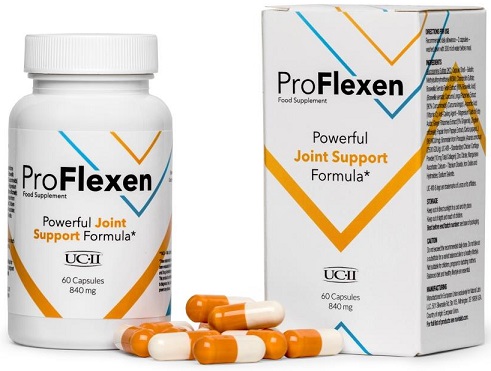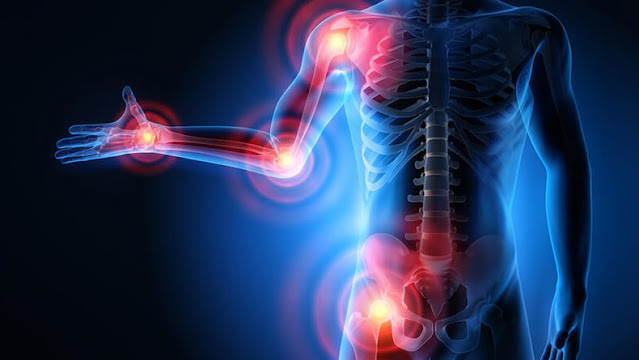- Get link
- X
- Other Apps
- Get link
- X
- Other Apps
Many people face diseases of the musculoskeletal system, regardless of age, lifestyle or other factors. The reasons may be different, but in most cases, it is recommended to take vitamins that strengthen bones and joints as part of complex therapy.
What elements are needed for bones and joints
The skeleton of the human body consists of bones and their joints - joints, synarthrosis, tendons, skeletal muscles. Bones are constantly renewable tissue. Calcium is the main building block for bones. Joints - These act as hinges for mobility. There are 360 of them in the human body. Joints are made of cartilaginous tissue that covers the connecting surfaces of adjacent bones. The main component of cartilage tissue is collagen. The cartilage is covered with synovial fluid. For its sufficient formation, collagen and glycosaminoglycans are required.
The most important trace elements and vitamins for joints, which are involved in the synthesis of joint tissues and help maintain the health of the musculoskeletal system, are shown in the table:
Vitamin / trace element name
Act
Where are contained
Group D
Participate in the absorption of calcium and phosphorus from food, participate in metabolic processes at the cellular level.
Up to 90% of vitamin D3 is formed in the body under the influence of ultraviolet radiation, about 10% is absorbed from food: fatty fish, butter, yeast.
C (ascorbic acid)
Antioxidant, promotes the synthesis of hyaluron and chondroitin, participates in the formation of collagen necessary for the renewal of cartilage tissue.
Citrus fruits, bell peppers, onions, rose hips, currants, black and red mountain ash, kiwi.
Group A (retinoids)
It has antioxidant properties, improves the condition of soft tissue cells.
Carrots, mangoes, pumpkin, red peppers, apricots, peaches, spinach, parsley, fish, liver, egg yolk.
Group B
Contribute to the restoration of damaged tissues, strengthening immunity, reducing inflammatory processes in arthrosis, arthritis, rheumatism and other degenerative conditions of the joints.
Nuts, cereals, wholemeal baked goods, broccoli, legumes, tomatoes, spinach, pork, fatty fish, meat offal.
E (tocopherol)
It is responsible for the restoration and rejuvenation of tissues, improves cell nutrition, and reduces the concentration of free radicals.
Cold pressed vegetable oils, lettuce, legumes, cereals, carrots, radishes, pork, beef.
Calcium
It is necessary for the formation of bone tissue, healthy teeth, normal muscle function.
Dairy products, hazelnuts, almonds, sesame seeds, dried apricots, legumes, cherries, grapes, oranges.
Phosphorus
Participates in the absorption of calcium, is a part of bone tissue and tooth enamel.
Pumpkin seeds, sesame seeds, cheeses, cashews, beef liver, fish, organ meats.
Selenium
It is necessary for building cartilage tissue, improves metabolic processes and increases the body's ability to fight inflammation.
Brazil nuts, meat, chicken, meat offal, seafood, mushrooms.
Silicon
Improves the condition of cartilage tissue, gives it elasticity and promotes cell renewal by stimulating collagen production.
Cereals, strawberries, pineapple, legumes, bananas, nuts, kohlrabi, corn.
To strengthen joints and ligaments, omega-3 acids are also useful, which promote cell renewal, making tissues more elastic and elastic, and help fight inflammation. The richest source is fatty fish.
Regular consumption of the above foods will help maintain the balance of the required substances. But the diet does not always fully compensate for the needs of the body, therefore, in some cases, it is recommended to take dietary supplements for joints and cartilage.
Indications for use
Vitamin preparations can be included in the complex therapy for arthrosis, arthritis, osteoporosis, rheumatism and other pathologies associated with the destruction of bone and cartilaginous tissue, inflammatory processes in the joints. Also, drugs can be recommended:
- with high loads on the musculoskeletal system in athletes;
- people performing hard physical labor;
- people whose work involves standing for many hours;
- after fractures, sprains, dislocations;
- residents of regions with few sunny days;
- women after menopause.



Comments
Post a Comment